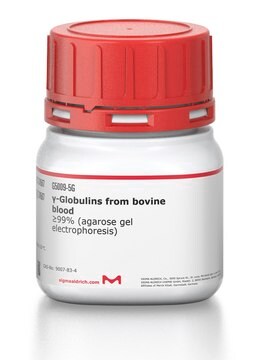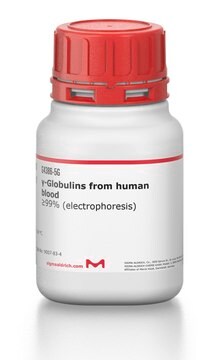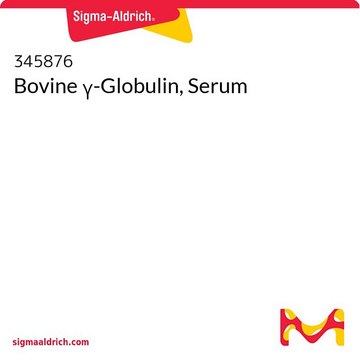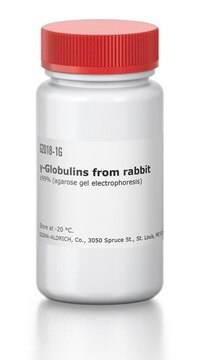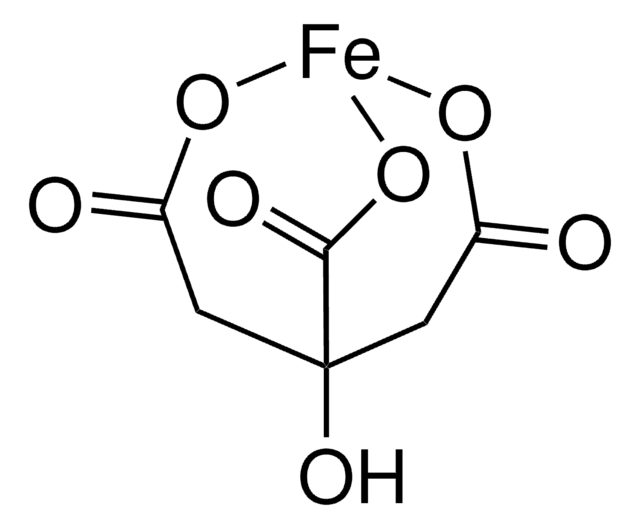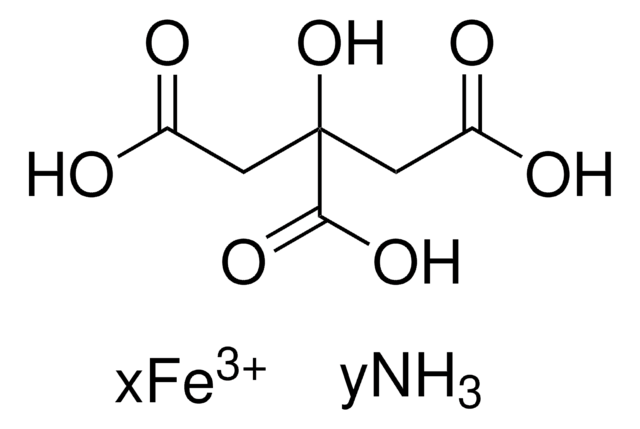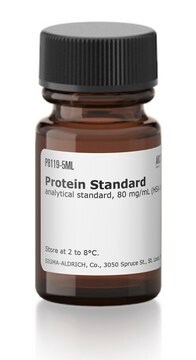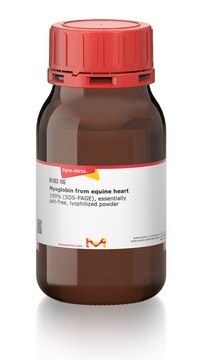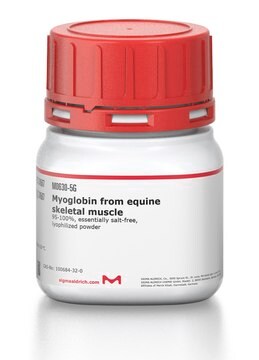SRE0011
γ-Globuline aus Rinderblut
Suitable for manufacturing of diagnostic kits and reagents, ≥99% (agarose gel electrophoresis)
Synonym(e):
γ-Globulin vom Rind
Anmeldenzur Ansicht organisationsspezifischer und vertraglich vereinbarter Preise
Alle Fotos(5)
About This Item
Empfohlene Produkte
Qualitätsniveau
Assay
≥99% (agarose gel electrophoresis)
Form
powder
Zusammensetzung
NaCl, ≤4%
Anwendung(en)
diagnostic assay manufacturing
Versandbedingung
wet ice
Lagertemp.
−20°C
Suchen Sie nach ähnlichen Produkten? Aufrufen Leitfaden zum Produktvergleich
Allgemeine Beschreibung
Antikörerreiche Plasmaproteinfraktion
Bovines Gammaglobulin (BGG) ist ein wichtiger Bestandteil des Immunsystems von Rindern und anderen Hornträgern. BGG kommt im Blut von Rindern vor und wird hauptsächlich zur Herstellung von medizinischen Produkten wie Impfstoffen, Seren und Diagnosereagenzien verwendet. BGG kann auch zur Behandlung bestimmter Krankheiten, wie Hepatitis B, sowie zur Stärkung der Immunität bei anderen Tieren und beim Menschen eingesetzt werden.
γ-Globulins are immunoglobulins that contain IgM, IgA, and IgY. They are glycoproteins produced by plasma cells. The immunoglobulins are heterodimeric molecules comprising two light chains and two heavy chains linked together by disulfide bonds.
Anwendung
Bovines γ-Globulin wurde in Studien zur Untersuchung der Mechanismen von Immuntoleranz als immunologische Herausforderung eingesetzt.
γ-Globulins from bovine blood has been used along with polyethylene glycol (PEG) to investigate the kinetics of liquid-liquid phase separation (LLPS) in its temporary and arrested state. It has also been used as a parent solution to prevent bacterial growth and study the antibody system with LLPS and highly elevated protein concentrations in arrested transition.
Biochem./physiol. Wirkung
Immunoglobulins are implicated in the activation of the complement system and the opsonization of microbes for phagocytosis. It is also involved in the neutralization of toxins and viruses and blocks the attachment of microbes to mucosal surfaces. They protect our bodies against fungi, viruses, and bacteria. Immunodeficiency is associated with recurrent infectious diseases.
Angaben zur Herstellung
Prepared from Cohn Fraction II, III
Lagerklassenschlüssel
11 - Combustible Solids
WGK
WGK 3
Flammpunkt (°F)
Not applicable
Flammpunkt (°C)
Not applicable
Hier finden Sie alle aktuellen Versionen:
Besitzen Sie dieses Produkt bereits?
In der Dokumentenbibliothek finden Sie die Dokumentation zu den Produkten, die Sie kürzlich erworben haben.
Kunden haben sich ebenfalls angesehen
Stefano Da Vela et al.
Soft matter, 13(46), 8756-8765 (2017-11-14)
We investigate the transition of the phase separation kinetics from a complete to an arrested liquid-liquid phase separation (LLPS) in mixtures of bovine γ-globulin with polyethylene glycol (PEG). The solutions feature LLPS with upper critical solution temperature phase behavior. At
Blood
Sturkie's Avian Physiology, 167-191, 167-191 (2015)
Harry W Schroeder et al.
The Journal of allergy and clinical immunology, 125(2 Suppl 2), S41-S52 (2010-03-05)
Immunoglobulins are heterodimeric proteins composed of 2 heavy and 2 light chains. They can be separated functionally into variable domains that bind antigens and constant domains that specify effector functions, such as activation of complement or binding to Fc receptors.
Unser Team von Wissenschaftlern verfügt über Erfahrung in allen Forschungsbereichen einschließlich Life Science, Materialwissenschaften, chemischer Synthese, Chromatographie, Analytik und vielen mehr..
Setzen Sie sich mit dem technischen Dienst in Verbindung.